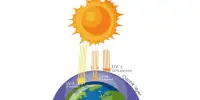Researchers were able to identify how these nonmaterial contributions from nature are linked to and significantly affect human well-being after conducting a systematic review of 301 academic articles on “cultural ecosystem services.” They discovered 227 distinct pathways by which human interaction with nature influences well-being positively or negatively. These were then used to identify 16 distinct underlying mechanisms, or types of connections, by which people experience these effects. This comprehensive review brings together observations from a dispersed field of research, which could be very useful to policymakers seeking to benefit society through the careful use and protection of nature’s intangible benefits.
Do you ever feel the need to get some fresh air to re-energize yourself, or to spend some time relaxing in the garden? Nature provides many other benefits that we may overlook or find difficult to grasp and quantify, in addition to clean water, food, and useful raw materials. Cultural ecosystem services (CESs) research aims to better understand these nonmaterial benefits we receive from nature, whether they emerge through recreation and social experiences, or nature’s spiritual value and our sense of place.
Hundreds of CESs studies have been conducted to investigate the links between nature and human well-being. They have, however, frequently used different methods and measurements, or have focused on different demographics and locations. This fragmentation makes identifying overarching patterns or commonalities in how these intangible contributions actually affect human well-being difficult. Better understanding of them could aid real-world environmental decision-making, benefiting both individuals and society as a whole.
We identified 227 unique linkages between a single CES (such as recreation or aesthetic value) and a single constituent of human well-being (such as connectedness, spirituality, or health). We knew that there are many linkages, but we were surprised to find quite so many of them.
Lam Huynh
To try and get a “big-picture” view, graduate student Lam Huynh from the Graduate Program in Sustainability Science at the University of Tokyo and team conducted a systematic literature review of 301 academic articles. After a critical reading, they were able to identify hundreds of links. “We identified 227 unique linkages between a single CES (such as recreation or aesthetic value) and a single constituent of human well-being (such as connectedness, spirituality, or health). We knew that there are many linkages, but we were surprised to find quite so many of them,” said Huynh. “Then, through further critical reading, we could identify major commonalities.”
In particular, they identified 16 distinct underlying “mechanisms,” or types of connection, which refer to the different ways that people’s interaction with nature affects their well-being. For example, there can be positive interactions through “cohesive,” “creative” and “formative” mechanisms, but also negative interactions through “irritative” and “destructive” mechanisms. Previous studies had identified some of these mechanisms, but 10 were newly defined, including the more negative effects, clearly showing that our well-being is linked to the intangible aspects of nature in many more ways than previously thought.

According to the paper, the negative contributions to human well-being came primarily from the degradation or loss of CESs, as well as ecosystem “disservices” such as annoyance at wildlife noise, which can have a particularly negative impact on some people’s mental health. However, the greatest positive contributions of CESs were to both mental and physical health, which were primarily generated through recreation, tourism, and aesthetic value.
“It is particularly interesting to note that the identified pathways and mechanisms rather than affecting human well-being independently, often interact strongly,” explained co-author Alexandros Gasparatos, associate professor at the Institute for Future Initiatives (IFI) at the University of Tokyo. “This can create negative trade-offs in some contexts, but also important positive synergies that can be leveraged to provide multiple benefits to human well-being.”
Despite the comprehensiveness of the review, the researchers acknowledge that there may still be more links that have not yet been identified, especially as the review revealed gaps in the current research landscape. “We hypothesize that missing pathways and mechanisms could be present in ecosystem-dependent communities, and especially traditional and Indigenous communities, considering their very unique relations with nature,” said Gasparatos.
“Another knowledge gap we identified is that the existing literature on these nonmaterial dimensions of human-nature relationships primarily focuses on individual well-being rather than collective (community) well-being,” Huynh explained. “This substantial gap limits our ability to identify potential synergies and trade-offs in ecosystem management research and practice.”
The team has now been awarded a grant to investigate the effects of CES provision on human well-being in Tokyo’s urban spaces. “This project is a logical follow-up to see if and how some of the identified pathways and mechanisms manifest in reality and intersect with human well-being,” Gasparatos explained.
The researchers hope that this study and similar efforts will enable real-world impact by applying key findings from this complex and diverse body of knowledge. IFI’s Professor Kensuke Fukushi, a study co-author, summarized their hope that “Policymakers can design appropriate interventions with a better understanding of nature’s many connections to human well-being and the underlying processes that mediate them. Such coordinated action could capitalize on the positive contributions of these connections and provide another avenue for protecting and managing ecosystems in a sustainable manner.”
















